
Richmac
-
Content Count
234 -
Joined
-
Last visited
Content Type
Profiles
Forums
Calendar
Posts posted by Richmac
-
-
My Head lights were picked up at mot time after I had changed the bowls. The mot man advised me to draw a line on the back of the garage door about three feet from the car and I think the height was to the center of the headlights and adjust the aim to fall on or just below the line. I done this took car back and it passed ok
-
I did mine so must be easy as I'm no mechanic. I didn't ask here how to do it so popped the ball joint which came apart no problem after a bit of heat. I bought new gaters from my local parts supplier to save postage not sure of quality yet. I did end up having to have the tracking re-done despite trying to mark the position with tape. Wish I had asked here first now I know quality of parts is suspect. Regards Richard
-
Thank you Mick for the comprehensive reply which if I understand correctly to prolong engine life replace the injectors every 100k miles. Very interesting but too late for me and Richards passat
-
21 hours ago, Motorsport Mickey said:
Whoa, you can't compare between heavy haulage trucks and 40 year old plus cars.
Depending upon the age of the truck it may have "plateau honed bores" which do not get bedded in until 55-60k on the clock, we used to give our demo trucks to "pet" haulage firms who liked our product to put these sort of mileages on, to maximise their power and efficiencies before offering to actual customers for demo. ! It's also likely to have line injection running at 1700 bar (yes 1700) which offers incredible injection and atomising all which goes towards reducing possible diesel flow down the bores and contaminating the oil, which wears the bores and piston rings etc "screwing the pooch" for starship mileages.
Oil change intervals are enormous, depending upon the marque of truck and mileages a 3 month oil change is not unusual, at up to 60,000 mile in between, and annual mileages of 200-300, 000 range often running with 3 drivers (otherwise can't make those mileages) through 24 hour days.
Mick Richards
Oh ok loads of reasons why a lorry engine would last longer than a car engine sounds like they are chalk and cheese. Every day is a school day. However I wasn't comparing with a 40 year old car but Richards Passat. He doesn't say how old but take a guess at 10/15 years. So what kind of mileage might be expected for Richards passat before the engine was toast?
Regards Richard
-
2 hours ago, brenda said:
Hi the the hgv that I drive has just over 700,000 miles on the clock same engine, gearbox and diff. A few other parts have been changed, It is inspected every five weeks. I can honestly say that it has never failed a MOT, if a hgv fails it gets a marker on it no matter how small a fail and vosa have it on there records ready for when they pull you over for road side checks even when a fail has been rectified and the truck has a new mot.
Mike Redrose Group
Wow on that basis I can't think of a reason why a car engine should not last the same mileage? I guess they rev higher but wouldn't be under the same loads. Do you change all the oils regularly including diff and gearbox?
-
Glad to hear your passat lives for another year. Why were you worried? Should I be worrying my car has 227000 miles and I never take any special action before the mot? I don't know but a lorry must clock up more being on the road all day every day. I wonder what mileage should be expected before they give up the ghost?
-
Thanks for all the replies guys I've ordered some and will give it ago. Hopefully plenty more years left in the old automobile yet
Regards Richard
-
Hi guys I have a 1997 vehicle that I have used as my daily driver for the past 13 years and I'm a little ashamed to say that it hasn't had the same level of care as the TR gets. It is now suffering from corrosion mainly around the rear axle area and rear suspension mountings etc I have taken the car off the road to give it a full service changing all the diff and gearbox oils etc and looking to do something with the rust without carrying out of full restoration I've seen this Lanoguard product on the internet which claims you can just spray liberally around the heavily corroded areas leave for 2 months and then reapply. I'm looking to prolong the life of my car as I like it. So my question to you guys is has anybody here used this system and does it work? What results can I expect or is it just the same as liberally spraying waxoyl around? https://www.lanoguard.co.uk/pages/how-to-apply
Regards Richard
-
-
11 hours ago, Lebro said:
I think it was an AC capacitor holding the 240 Volts from when the PCB was last working

Crikey I hope not capacitors scare me I heard a story about a guy killing himself by sticking his fingers in a microwave and touching one of those things. And he was a qualified electrician
-
Well as an update a couple of days ago I was convinced enough that the PCB at fault that I ordered a reconditioned one from ebay with an expected delivery date of 28th December. However low and behold it turned up today. Yesterday I was sufficiently convinced that the fan was at fault but decided that as I now had a replacement PCB board I would fit it anyhow and low and behold the boiler has burst back into life and I now have fully working heating system.
So I want to thank all of you on here for contributing, not just for your knowledge but your posts also provided me with the motivation to continue trying.
I also wanted to say that I'm sure there are some out there who were thinking I'm out of my tiny mind to be messing with something I have no knowledge of and without being Part P or Gas Safe registered. I would say I always made sure there was no power to the boiler before messing and was fully aware I may do more harm than good to my boiler. I will also fit a CO Detector, although I haven't touched any gas joints, and will get the boiler fully serviced in the new year. This was always about getting me through the holiday period but it has given me an a learning curve on how boilers work, how to use a multi-meter and a sense of achievement at having fixed something myself that I also get working on the TR
So thank you all again I don't think I would have achieved it without your help so I wish you all a merry and warm Christmas
Regards Richard
-
However why doesn't mkmicks trick of blowing into the pipe to trick the diaphragm into thinking the fan is turning work?
-
16 minutes ago, RobH said:
Looking more and more like a duff fan motor then, since the PCB is obviously supplying the required voltage, though that is measured without a load.
To be 100% sure you could try connecting the fan direct to the mains as I described above.
(The pressure switch can't operate unless the fan is running so it isn't that.)
For the record 245V is normal for the mains voltage - it is nominally 230V and has a tolerance of +10%, -6% so should be between 216 and 253 volts.
Thanks Rob and Charlie and others for your help. I'm not comfortable plugging the fan directly to the mains so I'll do a search for a replacement fan
-
On 12/21/2022 at 8:23 PM, Charlie D said:
OK so you CAN use a multimeter .

What I am about to say is done entirely at your own risk.
Make sure the power to the entire boiler is OFF.
Remove the two push on connectors from the fan motor.
Set your multimeter to measure AC 250 volts (Or more).
Push the multimeter probes into the purple connectors from the fan.
(If you are at all concerned, wrap these joints in insulation tape.)
Let go of everything from your hands, but make sure you can read the meter.
Switch the power back on.
See what the reading on the meter says, and let us know what the reading is.
Charlie.
-
10 hours ago, BlueTR3A-5EKT said:
This just points to fan or pressure switch.
https://www.miketheboilerman.com/potterton-kingfisher.html
Kingfisher MF:
The Kingfisher MF is a totally different boiler inside, despite being a floor standing boiler looking broadly like the older Kingfisher. The MF is significantly more fuel-efficient due to having fully automatic electronic ignition, no permanent pilot light, electronic flame detection and a fan-powered flue (even the open flue versions with a vertical chimney) all operated by a central electronic control board. Being a non-condensing boiler however, the Kingfisher MF was discontinued when condensing boilers became mandatory in 2005.
This boiler suffers from all the same failures as most fan flued non-condensing boilers. Fan failure, air pressure switch failure, PCB failure, gas valve failure etc.
The Kingfisher MF has overheat protection so should the heat exchanger overheat, the boiler ‘locks out’. ‘Locking out’ means the boiler illuminates a red ‘lockout light’ and turns itself off, requiring the user to reset boiler by pressing the ‘Reset’ button once the boiler had cooled for a while. The ‘Lockout’ light would be better labeled “overheat” in my personal opinion, as this is what it actually means.
There are three common causes of overheating in the heat exchanger, leading to locking out:
1) An external fault, nothing to do with the boiler. No bypass circuit fitted by the installer. The boiler runs the pump for a few minutes to distribute residual heat after the burners shut down, and if the heating system installer does not ensure there is a water circuit available for this water flow after shut-down, the residual heat will not be distributed and the boiler will occasionally (or regularly) lock out.
2) The pump over-run function on the boiler failing, so residual heat in the heat exchanger after boiler shut-down no longer gets distributed.
3) Dirty system water. Corrosion deposits getting picked up from inside radiators etc and being carried into the heat exchanger and deposited there, where they stay for ever and prevent heat in the cast iron passing through into the water.
There is one further possible reason for locking out…
On the vertical flue (open flue) versions, fresh air is drawn from the room into the top of the boiler to dilute and cool the hot flue gasses rising up the chimney. Should the chimney flue get blocked, those potentially dangerous hot flue gasses can spill out through the air intake into the room containing the boiler as they can no longer pass up the chimney flue. To guard against this spillage there is a spillage thermostat (often referred to as a “TTB sensor”) mounted in the air intake which trips when spillage occurs, also putting the boiler into ‘Lockout’. So if your Kingfisher is the vertical chimney flue version and locking out, it is possible there is a fault with the flue rather than it overheating.
Common faults and fixes:
1) Pilot flame failure. This boiler has a pilot light which only runs when the boiler is ON. It shuts down when there is no demand for heat. When there is demand for heat, the pilot flame lights first then about one second later the pilot lights the main burner. This misleads owners and technicians into not realising there is a separate pilot light at all. I’d go as far as to say most Kingfisher MF failures revolve around the pilot failing to light and the possible reasons for this deserve a sub-section all of their own.
1a) If the pilot flame is failing to light, a common cause is a blocked pilot injector. The burner assembly and pilot assembly are at floor level and on open flue versions terribly prone to contamination with dirt and dust, although blockage can occur on both open and balanced flue versions. The injector can sometimes be cleared with a piece of 5A fuse wire but take care, it is made from soft aluminium. Better to replace with a brand new injector.
1b) If the injector is not blocked then either there is no gas supply to the pilot or there is no spark. Or both. When neither gas nor spark are present this usually indicates flue fan failure or air pressure switch (APS) failure. (The APS detects the fan running before allowing gas and spark to the pilot.)
1c) If there is gas but no spark, either the PCB is failing to produce a spark or the ignition lead is broken.
1d) If there is a spark but no gas, check for continuity across the gas valve pilot solenoid. The value should be around 2,000 Ohms. If you get this correct value check for 175Vdc on the terminals (beware this high DC voltage is DANGEROUS). No voltage suggests PCB failure, DC voltage present suggests mechanical failure inside the gas valve.
2) If there is a pilot flame present but no progression to ignition of the main burner, then the gas valve main burner solenoid is not opening. Apply the same checks to the main burner solenoid as to the pilot in 1d) above. One perverse failure to mention is that on a boiler with PCB failure, the failure is sometimes caused by a gas valve fault. There is a ‘fusible resistor’ on the PCB that fuses when the gas valve fails meaning the gas valve failure looks to the engineer like a failed PCB. Just plugging in an expensive new PCB without replacing the gas valve solenoids for continuity first can result in the new PCB being damaged instead of the boiler starting to work. Beware!
If you would like me to repair your Potterton Kingfisher, contact me on my mobile 07866 766364
Post script:
Clearances and access:
All boilers require good front access for servicing and repair. Boilers fitted into the corners of kitchens and surrounded with kitchen units can be a particular problem in this respect. Access from the side makes a boiler far more difficult and time-consuming to work on, if it is possible at all.
The manuals for the earlier models of Kingfisher boiler state 61cm (two feet) of clear space is needed directly in front of the boiler, which in practice might be adequate, but only just. Three feet of space is far better. The manual for the MF models states 25cm (10 inches) which is quite impractical. I shall need an absolute minimum of two feet of clear floor space directly in front of any model of Kingfisher boiler to repair it, preferably three feet, and I will check this with you on the phone before accepting a booking to visit. (If I remember!)
Diagram from the manual showing the MF boiler controls, including the lockout light and the reset button
If you like what I write, please Buy me a coffee. Thank you kindly!
I saw this thank you but my manual would suggest a PCB failure? If the guy was nearer I would have given him a call
-
2 hours ago, Gordon Bayley said:
Just seen this , there is a reset on the boiler front and an over heat stat on the pipework, does the pump run?
have you got power to the air pressure switch?
you can do most tests with a neon screwdriver (circuit tester),
An electrician could fault find he does not have to be Gas Safe because he's not touching the gas or the flue.
good luck, but be safe.
Pump runs Gordon but not sure how to test the pressure switch
-
23 hours ago, Charlie D said:
OK so you CAN use a multimeter .

What I am about to say is done entirely at your own risk.
Make sure the power to the entire boiler is OFF.
Remove the two push on connectors from the fan motor.
Set your multimeter to measure AC 250 volts (Or more).
Push the multimeter probes into the purple connectors from the fan.
(If you are at all concerned, wrap these joints in insulation tape.)
Let go of everything from your hands, but make sure you can read the meter.
Switch the power back on.
See what the reading on the meter says, and let us know what the reading is.
Charlie.
-
20 hours ago, Charlie D said:
OK so you CAN use a multimeter .

What I am about to say is done entirely at your own risk.
Make sure the power to the entire boiler is OFF.
Remove the two push on connectors from the fan motor.
Set your multimeter to measure AC 250 volts (Or more).
Push the multimeter probes into the purple connectors from the fan.
(If you are at all concerned, wrap these joints in insulation tape.)
Let go of everything from your hands, but make sure you can read the meter.
Switch the power back on.
See what the reading on the meter says, and let us know what the reading is.
Charlie.
Hi Charlie no I can't use a multimeter I just put it on a random setting that when I touch the prongs together changes the reading. My logic is if it changes touching the prongs and does the same thing on the item I'm trying to test then there is a circuit. No talent involved!!
I think I will be brave enough to try your suggestion and report back.
-
I've checked the two fuses in the PCB and they are fine thanks Rob for suggesting
-
25 minutes ago, RobH said:
Hi Rob Yes I saw this and connected my multimeter to the the thermostat and it shows a circuit so assuming this is closed? Also the fault finding guide suggests then if voltage is supplied then replace PCB
-
51 minutes ago, mkmick said:
Just to clarify the hose in your picture isn't the one that is used for the test from memory the red hose that connects to the air pressure switch is the one.
There is a sequence to a boiler firing If you are sure that you have power to the fan then that would suggest that the PCB is ok.
The red hose just goes nowhere Mick. Are you suggesting I connect a pipe to it for the test? I'll never get my head in there!!!
-
-
Unfortunately the suck test from mkmick didn't work. Still not firing up. I guess I'm into the PCB board now?
-
Thanks for your replies guys. Unfortunately I don't know how to use a multimeter although I have one and I also don't feel comfortable using one with the circuit live. I will try mkmicks trick after work and see how I get on, thanks Mick. Thanks to all who posted links much appreciated. Does anybody know if the fan is easily replaced? I can't find a video for my boiler?

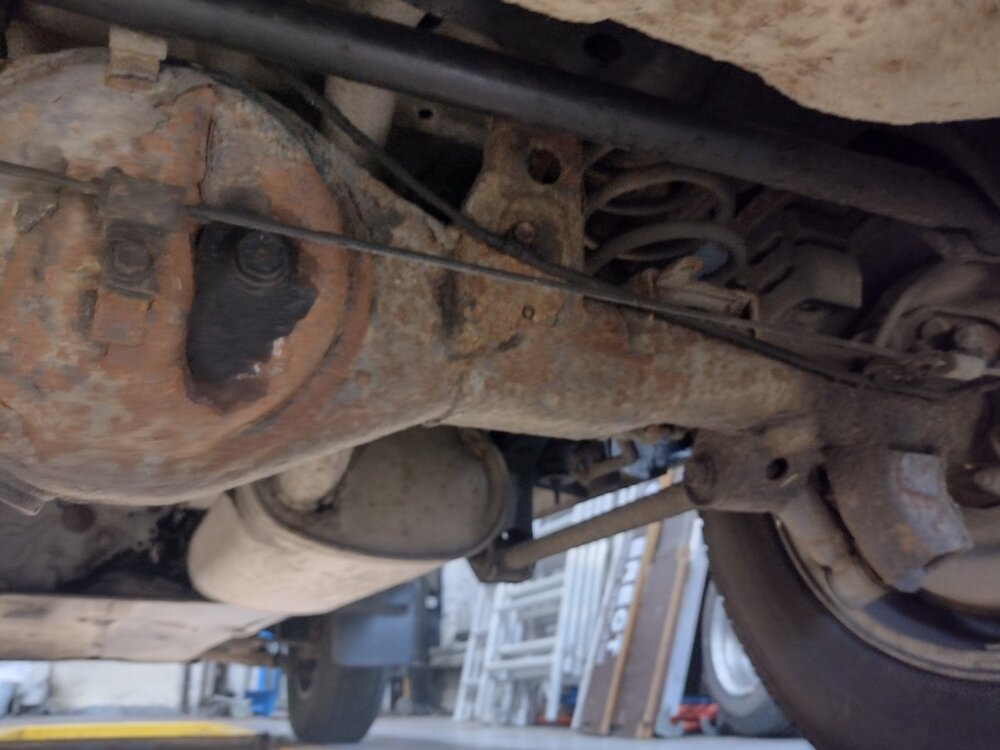

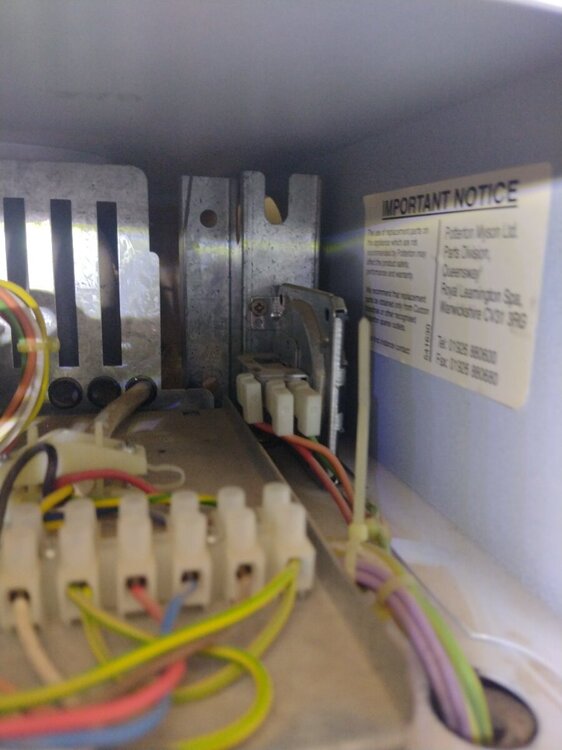
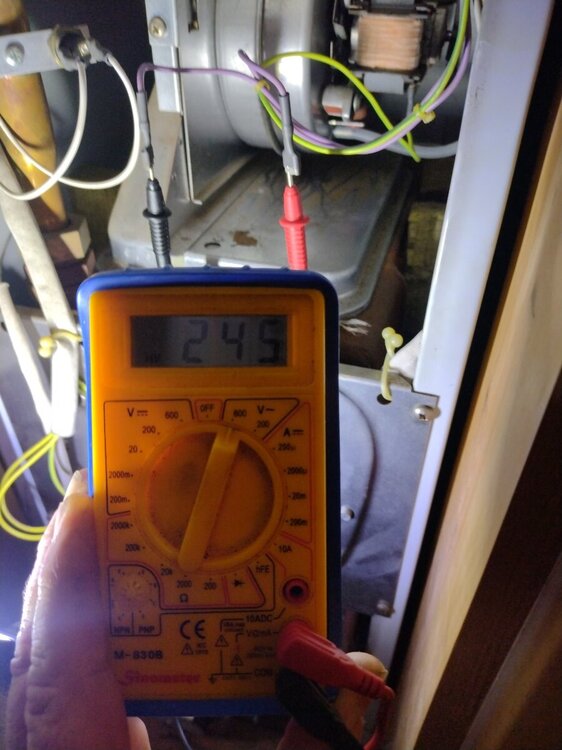

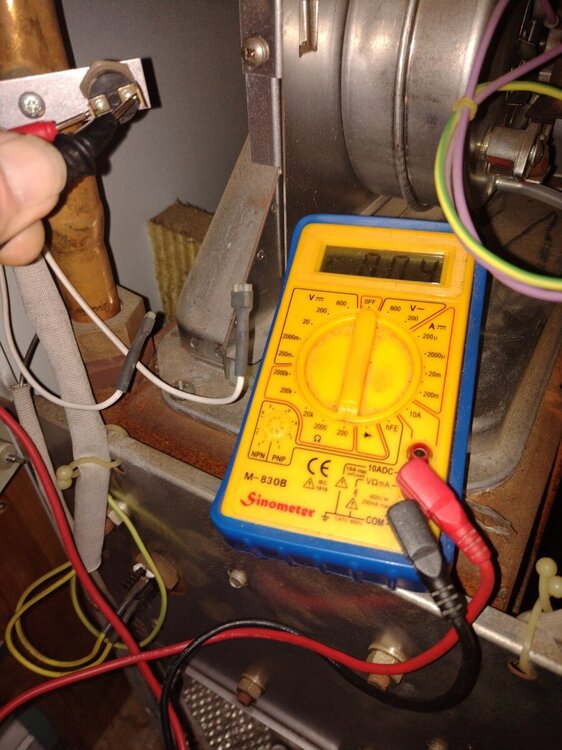
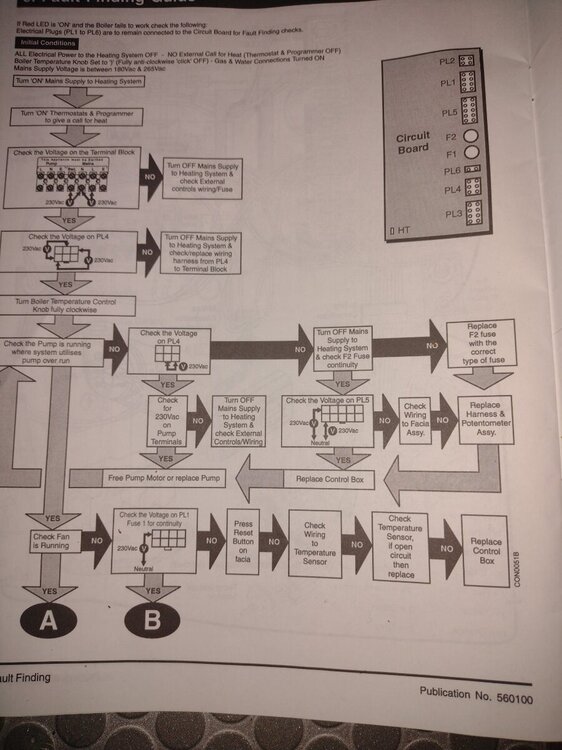
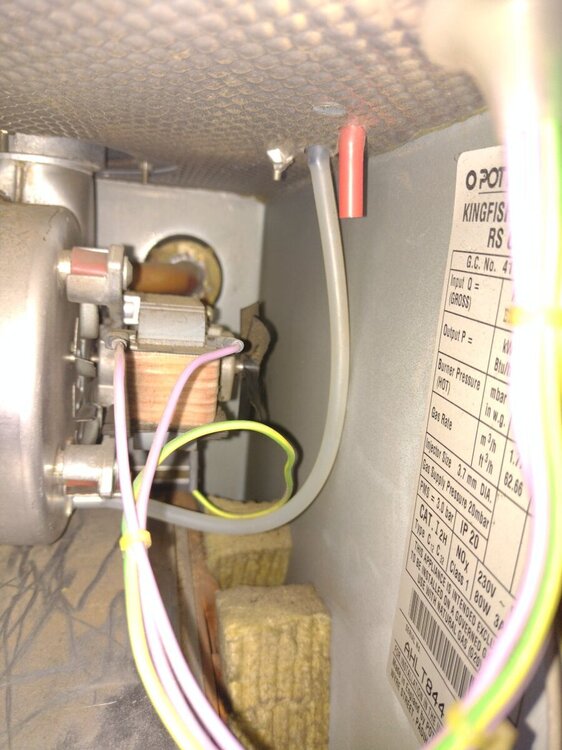
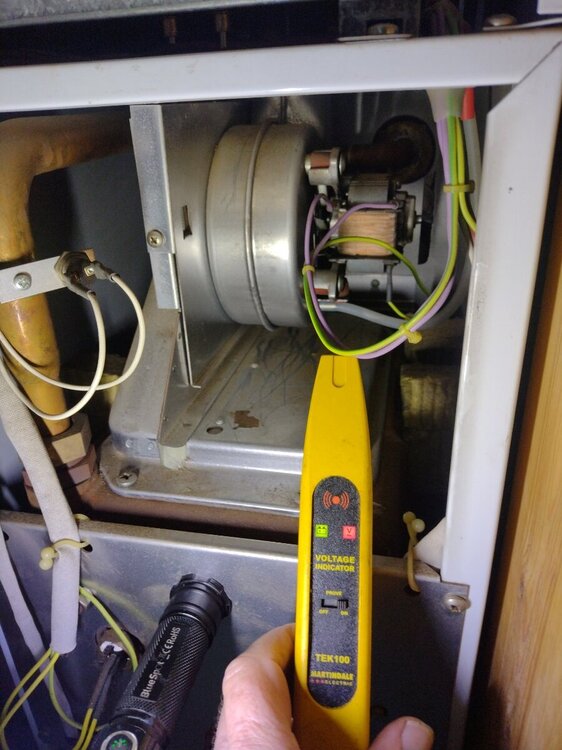
Engine test start
in TR6 Forum
Posted
You could take the opportunity to change the oil in another car and use the oil you drain to start the new engine?